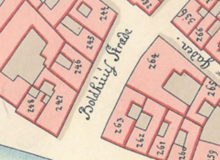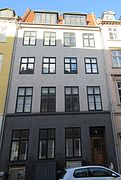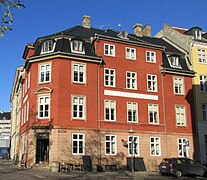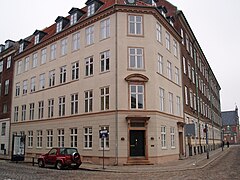 | |
| Length | 53 m (174 ft) |
|---|---|
| Location | Copenhagen, Denmark |
| Quarter | Indre By |
| Postal code | 1062 |
| Nearest metro station | Gammel Strand |
| Coordinates | 55°40′38.3″N12°34′54.6″E / 55.677306°N 12.581833°E |
| Southwest end | Ved Stranden |
| Northeast end | Admiralgade |
Boldhusgade (lit. "Ball House Street) is a short, cobbled street in the Old Town of Copenhagen, Denmark. It runs from Ved Stranden in the southwest to Admiralgade in the northeast from where it continues as Laksegade.






